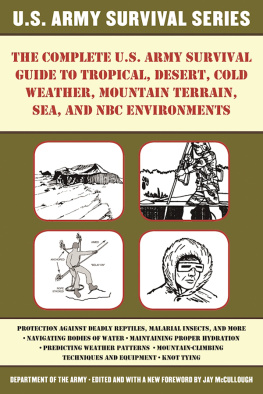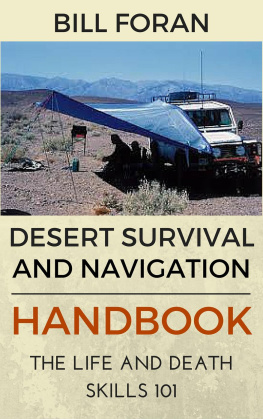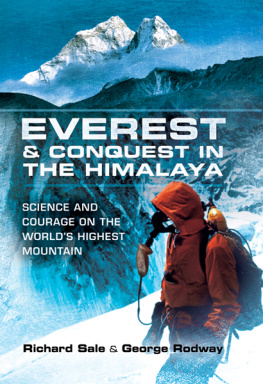In November 1999, the newspapers were dominated by stories of the death of the golf champion Payne Stewart and four others in an air crash. Their Lear jet lost contact with ground control soon after taking off from Orlando, Florida, at an altitude of around 11,300 metres (37,000 feet). Concerned that it might crash in a populated area, US officials scrambled two Air Force fighter planes to shoot it down, if necessary. They reported that there was no sign of life on board the Lear jet and that the windows were frosted over, which suggests that the aircraft had depressurized and the temperature in the cabin had plunged to that of the outside air. The plane continued on autopilot before finally running out of fuel and crashing in South Dakota, but its occupants would have died far earlier from lack of oxygen. It is not the first time such tragedies have occurred and it is unlikely to be the last, for there is simply not enough oxygen at such high altitudes to support life and the failure of a door or window seal may have fatal consequences.
Like Stewart and his colleagues, many of us live life on the edge, often without even realizing it. We routinely fly around the world at altitudes too high to support life, go sailing in frigid waters, expose ourselves to the dangers of the bends when scuba-diving on holiday, or simply live in places where the winter is so severe that it is not possible to survive outside overnight unaided. Environmental extremes are not the prerogative of the adventurous few with the help of technology, all of us can tolerate severe conditions with equanimity. Without adequate protection, however, it is a very different matter, and every year, thousands of ordinary people die of cold or heat stress, or succumb to mountain sickness.
Yet despite (or perhaps because of) the danger, people have always been fascinated by life at the extremes. Eight hundred million people in fifty-nine different nations watched Neil Armstrong set foot on the moon, and the exploits of polar explorers, mountaineers and other adventurers continue to enthral us. We share vicariously in their dangers, and the more narrowly they cheat death, the greater the thrill. There is even a terrible fascination in tragedy. The poignant story of a climber dying alone high up on a mountain, cut off from help by severe weather, yet still able to use his mobile phone to say goodbye to his wife, touches us more than hundreds killed by floods or earthquakes.
The perils of icy winters, freezing waters and scorching summers were recognized in classical times, but in the late nineteenth and early twentieth centuries the advent of balloons, aeroplanes, submarines and deep-sea diving and the growth in polar and mountain exploration, brought new hazards that required a deeper understanding of human physiology if they were to be circumvented. For many people, like deep-sea divers and astronauts, these risks constitute an unavoidable part of their job. But others put their lives in jeopardy for pleasure. Men and increasingly women constantly seek new physical challenges. Our own lives are so cushioned from danger and death that we crave adventure. Rather than a traditional holiday sitting on the beach, many people prefer the adrenaline rush of sports such as off-piste skiing, trekking in the high Andes, scuba-diving, bungee-jumping, and paragliding. Our ability to tackle these ventures with comparative safety has evolved from a partnership between physiologists interested in how the human body works and intrepid adventurers seeking to push the limits ever further.
This book describes the physiological response of the body to extreme environments and explores the limits to human survival. It considers what happens when you find yourself locked in the freezer, trapped under the ice, or stranded in the desert without water; why an elite mountaineer can climb Everest without supplementary oxygen, yet if an aircraft depressurized at the same altitude its occupants would lose consciousness in seconds; why astronauts may find it difficult to stand without fainting on their return to Earth; why deep-sea divers suffer from bone disease; and other such puzzles. Solving these problems has presented many challenges for physiologists, both physical and intellectual.
The philosopher Heraclitus once remarked that War is the father of all things. As far as the physiology of extreme environments is concerned, he had a point. Military personnel are routinely exposed to adverse conditions in just the last few years, we have seen wars fought in the freezing Balkan winter, the searing heat of the Kuwaiti desert, and the high mountain passes between India and Pakistan. Many investigations of the effects of heat, cold, pressure and altitude on humans were initiated, directly or indirectly, as a result of this military imperative. It is also salutary to realize that it was not primarily for scientific reasons, but rather because of the Cold War, that humans ventured into space.
Sport a far more acceptable form of competition between nations than war has also stimulated much interest in human physiology and in recent years sports physiology has developed into a distinct discipline. Most of us take some form of exercise, even if it is only the occasional sprint for the bus. But there is a limit to how fast we can run, even with training, and exercise imposes its own stresses on the body. This rather different, but related, type of extreme is discussed in Chapter Five.
The scientific study of human physiology is based on controlled experiment. Because the potential hazards may be poorly understood, and the limits to survival unknown, animals are often used in initial experiments to identify the type of dangers involved and to obtain an indication of the safety limits for a person. Ultimately, however, there is no substitute for humans and physiologists have often experimented on themselves and still do. Some of them even used their children. The eminent scientist J.B.S. Haldane once remarked that his father had used him as a guinea-pig ever since he was four years old (although he did not appear unduly discouraged by this experience, for he followed his father into a distinguished career as a physiologist).
There are good reasons why physiologists use themselves and their colleagues as experimental subjects. It is often easier to understand something by experiencing it yourself than from a second-hand description; and, particularly in the past, the work was often dangerous and unpredictable so that many scientists preferred to take a risk themselves, rather than ask a volunteer to do so. It was also quicker finding a volunteer takes time. The early physiologists needed considerable courage, as well as skill and scientific curiosity. Sitting in a cramped steel chamber filled with pure oxygen while the pressure is increased, knowing that you are doomed to go into convulsions that may cause you permanent damage, but not knowing exactly when it will happen, is a far from pleasant experience. But as discussed in Chapter Two, such experiments were vital for the safety of deep sea-divers.

![Frances M. Ashcroft Life at the Extremes: [The Science of Survival]](/uploads/posts/book/49583/thumbs/frances-m-ashcroft-life-at-the-extremes-the.jpg)










